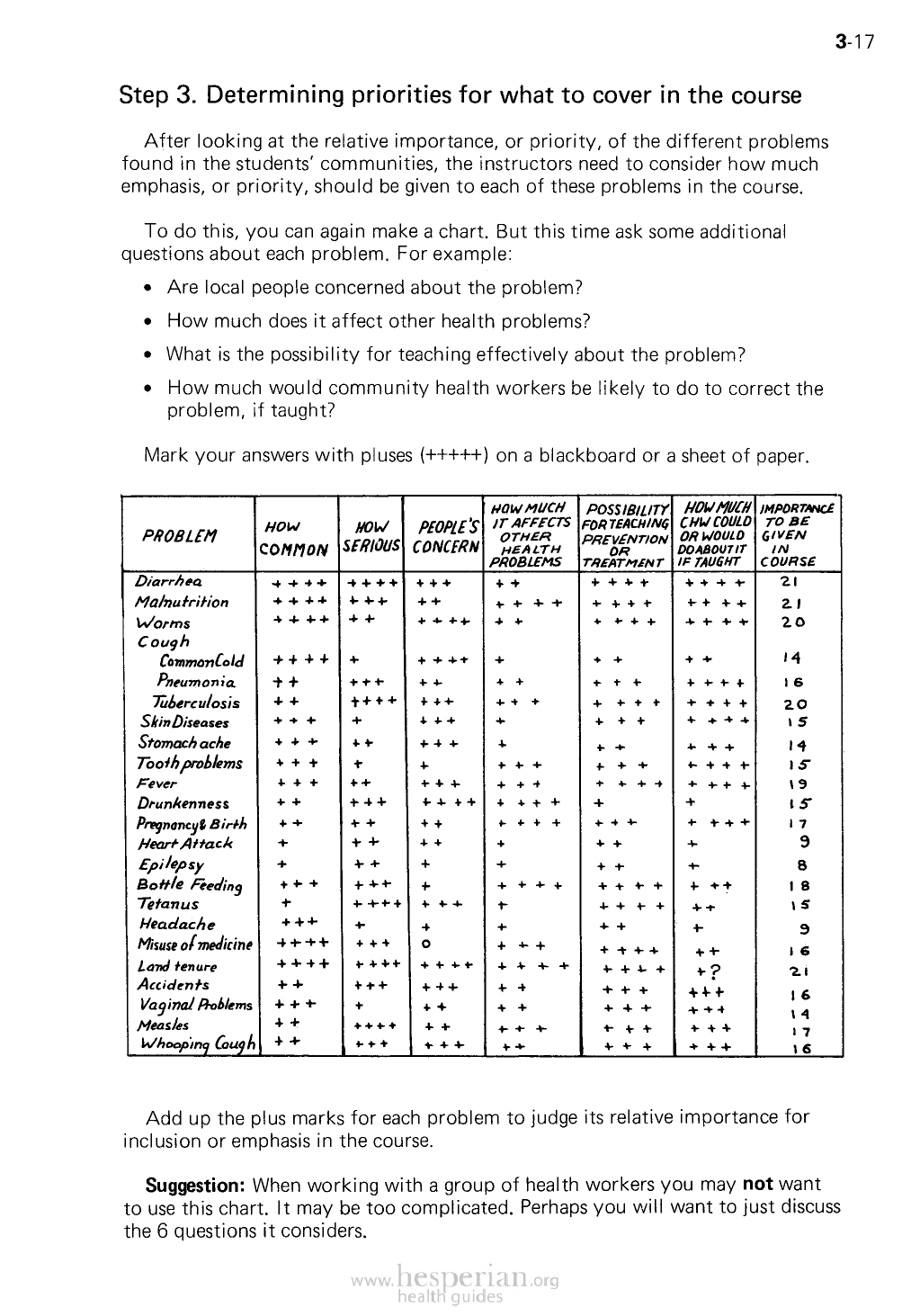
3-17
Step 3. Determining priorities for what to cover in the course
After looking at the relative importance, or priority, of the different problems found in
the students’ communities, the instructors need to consider how much emphasis, or
priority, should be given to each of these problems in the course.
To do this, you can again make a chart. But this time ask some additional questions
about each problem. For example:
• Are local people concerned about the problem?
• How much does it affect other health problems?
• What is the possibility for teaching effectively about the problem?
• How much would community health workers be likely to do to correct the
problem, if taught?
Mark your answers with pluses (+++++) on a blackboard or a sheet of paper.
Add up the plus marks for each problem to judge its relative importance for
inclusion or emphasis in the course.
Suggestion: When working with a group of health workers you may not want to
use this chart. It may be too complicated. Perhaps you will want to just discuss the 6
questions it considers.